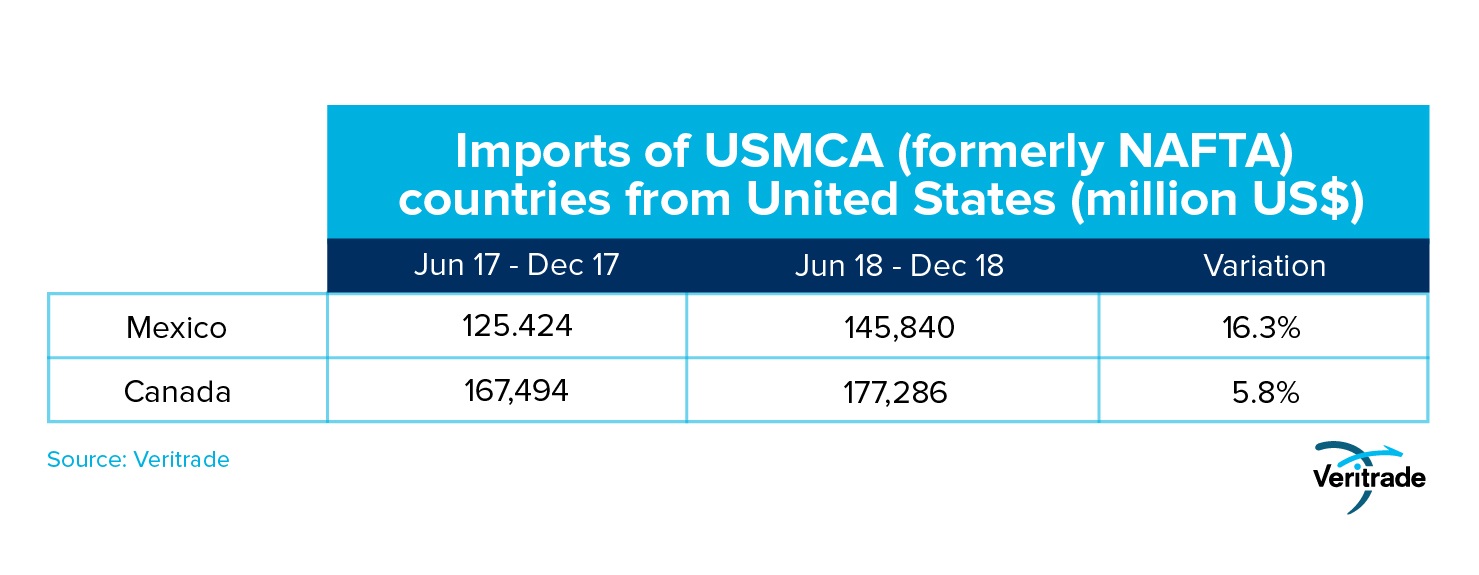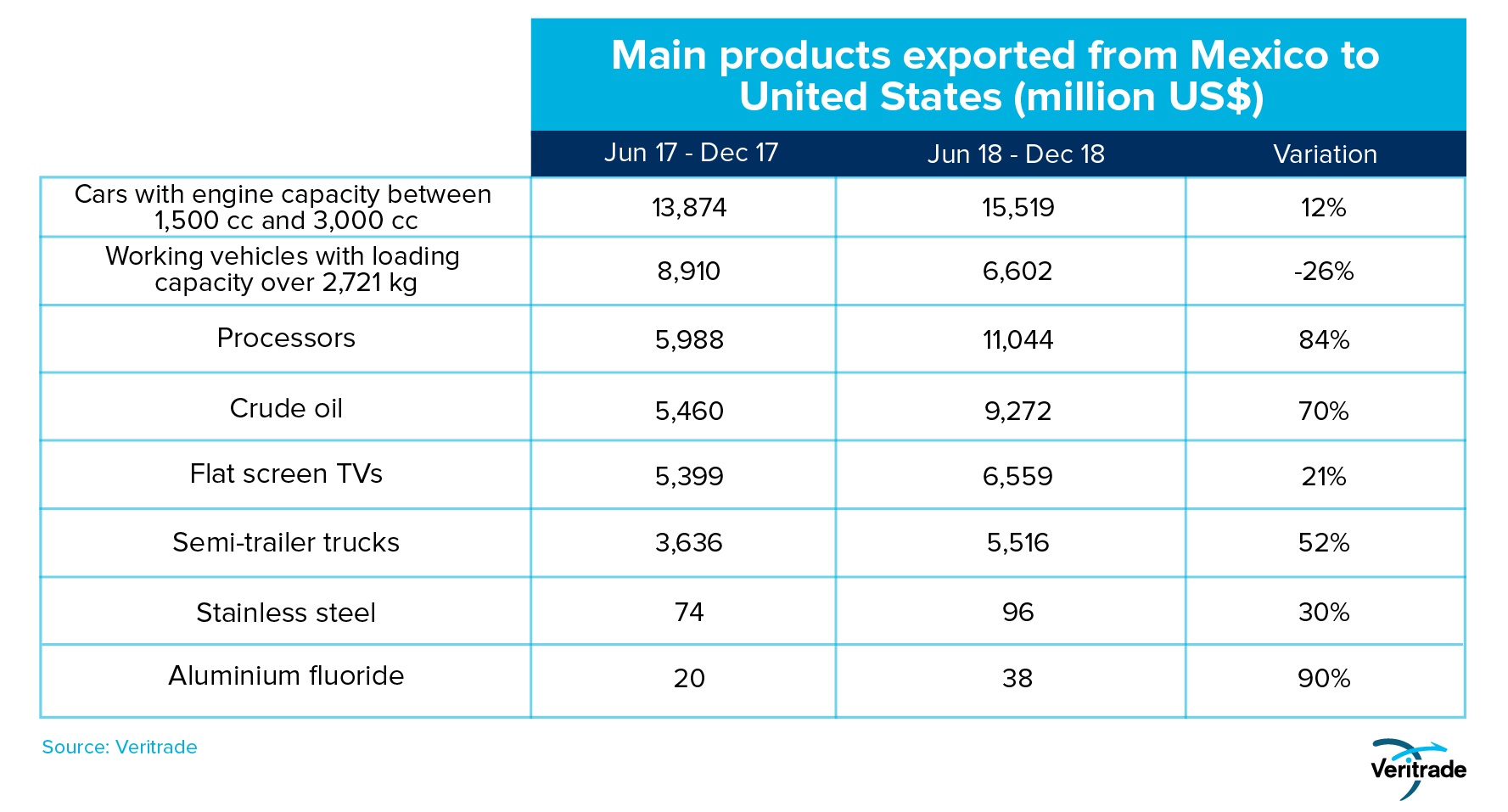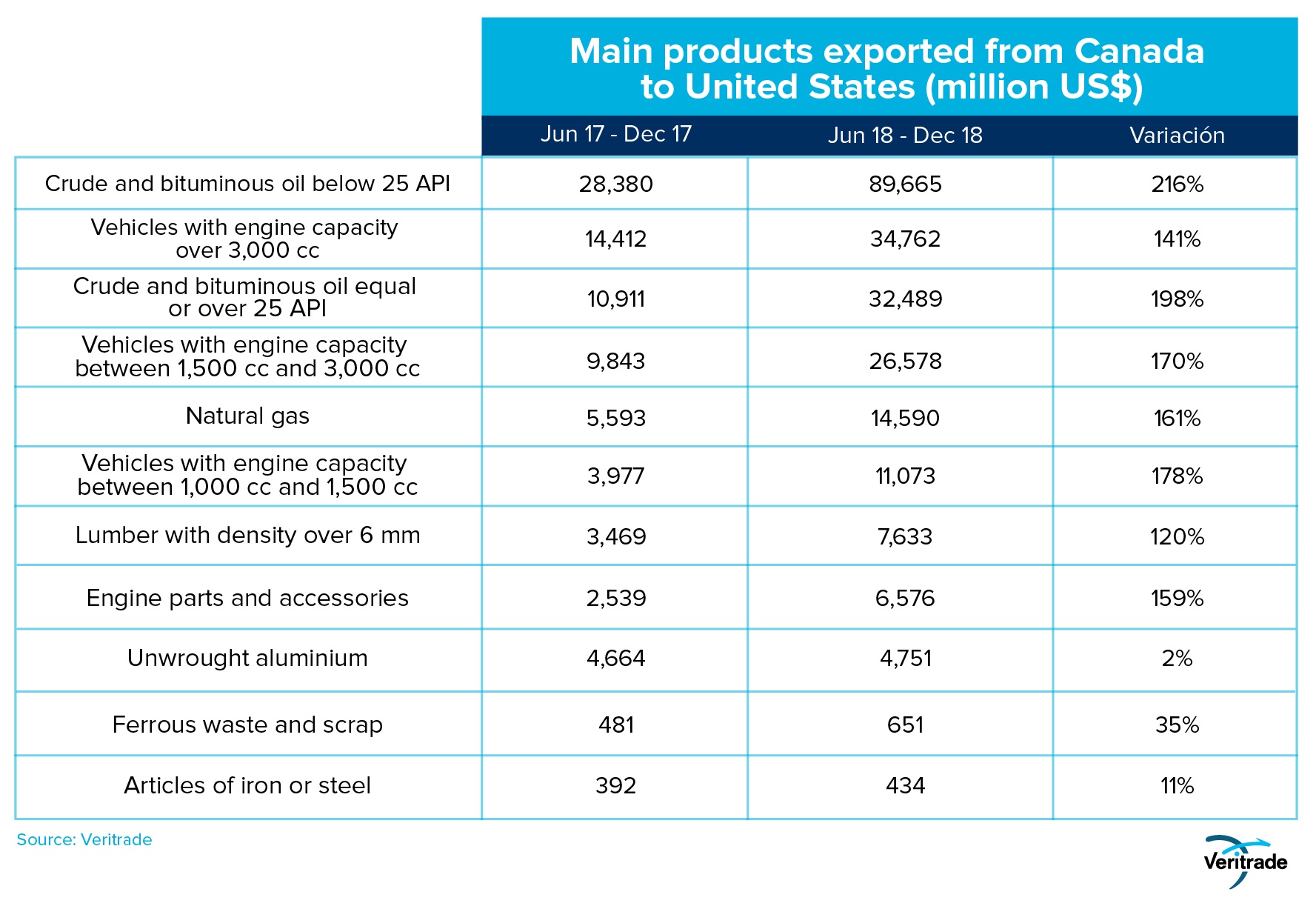Exports from Mexico and Canada to the United States increased despite the commercial war.
Published on 21 May 2019
The imposition of tariffs on the importation of certain products in the United States has shown that the search for efficiency has overcome protectionism.
One of the campaign promises of the president of the United States, Donald Trump, was to renegotiate the North American Free Trade Agreement (NAFTA, for its acronym in English). After two years and four months of his government, this is one of the firm offers of the president that have been fulfilled today, in contrast to the construction of the wall on the border with Mexico or the elimination of the Affordable Care Act, known as Obamacare.
Amid initial fears about the frontal attitude of the president's speech regarding the need to protect American industry, the end result ended up being a reconfiguration. In this way, one of the oldest multilateral treaties in the world, and one that marked the before and after in the negotiation of trade agreements between groups of countries, or bilaterally, changed its name and included new topics according to the world contemporary, instead of disappearing. The new treaty, which has been called simply Agreement between the United States, Mexico and Canada (USMCA, for its acronym in English), has already been signed by the governments of the three countries, and only remains to be ratified by the respective congresses
In this context, the imposition of tariffs of 25% and 10% on imports of steel and aluminum, respectively, both of Canadian and Mexican origin, and of other countries since June, has not had an important result. Despite the persistence of Trump in the intention to protect its economy with tariffs, and even the rumor of taxing the importation of vehicles with a rate of 25%, everything indicates that at the moment of ratification, a step back in the rates, or perhaps soon after this has happened.
The US automotive industry depends on imports of components and raw materials from neighboring countries, and technological products are not considered a threat to safety, as in the case of China. In this way, it could be expected that there will be success in freeing the market among the three countries, and in strengthening its nexus on the basis of the agreement.
In fact, the fact that China has been the main country in which the commercial war has been focused, has opened opportunities for Mexican and Canadian products to fill the space that is closed to Chinese merchandise. In the following tables, you can see how bilateral trade has evolved among the three countries in the seven months after the imposition of tariffs compared to the same period of the previous year.




In summary, trade between the United States and its neighboring countries has remained strong despite the imposition of tariffs. This suggests that the efficiency of exchanging goods with other countries boosts competitiveness to a level that can not be overcome by imposing tariffs on imports to propitiate domestic production. However, the most sensitive part of the chain is in the consumers, who could end up absorbing the increase in costs through higher final prices. It is expected that the culmination of the implementation process of the USMCA will lead to the elimination of protectionist tariffs, reinforce the union at the international level and leave a teaching on the power of the free market.
For more information on trade between North American countries, you can enter the Veritrade page.
Request your free trial by going to: https://bit.ly/2wi3c0l